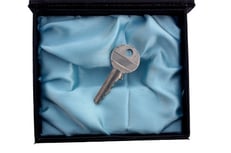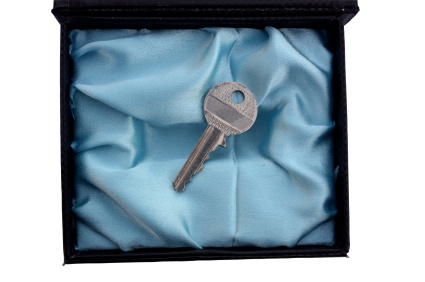David Larock in Mortgages and Finance, Home Buying
 Buying your first house is a milestone right up there with the biggies. When you become the legal owner of a patch of land, it’s one of those I-have-arrived moments. Whether it’s checking your satellite picture on Google earth, getting your first condo meeting notice, mowing your grass or just choosing a new paint colour without checking with the landlord, purchasing your first home is an exciting time.
Buying your first house is a milestone right up there with the biggies. When you become the legal owner of a patch of land, it’s one of those I-have-arrived moments. Whether it’s checking your satellite picture on Google earth, getting your first condo meeting notice, mowing your grass or just choosing a new paint colour without checking with the landlord, purchasing your first home is an exciting time.
As with any other big decisions there is a lot to know, and it’s not all about right or wrong answers. The best overall approach is to take your time, ask a lot of questions of people you trust and do some online research to round out your knowledge. To that end, I offer you my 13 Guideposts for Every First-time Home Buyer. This is a summary of the advice I have received over the years (the good parts anyway) along with some of my own insights.
1. Ease in to it. Go to a few Open Houses. If you’re in a partnership, talk about what you both want and make a list. Try to rank the items. Check out mls.ca to see listings in different areas. Pay attention to local schools, parks, proximity to transit, retail shopping.
2. Start keeping track of what you spend; the more accurate you can be the better. Then develop a budget that includes your projected mortgage payment with estimates for property taxes and maintenance. Trust me on this. 25 years is a long time to owe money and a little extra savings now will save you a lot in the long run.
develop a budget that includes your projected mortgage payment with estimates for property taxes and maintenance. Trust me on this. 25 years is a long time to owe money and a little extra savings now will save you a lot in the long run.
3. Once you understand your cash flow and you have an idea of how much monthly income you want to commit to your mortgage, get pre-approved and lock in a rate for 120 days. While a pre-approval may not get you the lender’s best rate and it doesn’t guarantee that you will approved on your full mortgage application, it does serve as a form of rate insurance at no cost to you.
4. Don’t try to time the market. If you buy a solid asset at a fair price and stay in the market for the long haul, you’ve set yourself up for success.
5. Choose a good realtor. Referrals from someone you trust are always a good option but if you are starting from scratch, besides the usual vetting, I’d try to find someone who does a lot of business in your areas of interest. One easy way to do that is to scan the realtor’s names when searching MLS listings in your area. You’ll probably notice a few that pop up frequently and the busy ones are usually that way for reason.
6. Location, location, location. It’s a cliché, but isn’t that the ultimate proof statement?
7. If you’re planning  on expanding your family in the next five years, make sure your first property can accommodate it. The longer your home fits into your time horizon the longer you have to defray the costs of buying and selling, and the more flexibility you have down the road. Flexibility avoids your having to sell urgently because your third child is going to have to sleep in a drawer!
on expanding your family in the next five years, make sure your first property can accommodate it. The longer your home fits into your time horizon the longer you have to defray the costs of buying and selling, and the more flexibility you have down the road. Flexibility avoids your having to sell urgently because your third child is going to have to sleep in a drawer!
8. Bidding wars are gut wrenching because by the time you’re ready to plunk your money down you’ve gone over every inch of the house in your mind and made it your own. If you’re in that situation, consider the advice that I got from my agent Claudio, who basically said, “Go in with a number where if you lose the house, you won’t be kicking yourself the next day if you find out it sold for $5,000 more.” And if someone else makes a higher offer, c'est la vie.
9. Get a home inspection. A good one costs about $500 and you should do your ho mework beforehand. Specifically, ask about the experience and background of the person the inspection company is sending out. For this kind of advice I’d want someone who had experience in construction, and I’d ask if he/she can bring a thermal camera (to check for air loss, cold spots and drafts). I know $500 sounds like a lot but on a purchase of this size it’s a drop in the bucket, especially compared to what you might pay for a major repair.
mework beforehand. Specifically, ask about the experience and background of the person the inspection company is sending out. For this kind of advice I’d want someone who had experience in construction, and I’d ask if he/she can bring a thermal camera (to check for air loss, cold spots and drafts). I know $500 sounds like a lot but on a purchase of this size it’s a drop in the bucket, especially compared to what you might pay for a major repair.
10. Consider taking out a Home Buyer’s Plan RRSP loan which allows you to borrow up to $25,000 from your RRSP, especially if it will lower or eliminate your need for high-ratio insurance.
11. Make sure you take advantage of tax rebates and credits. The First-time Home Buyer’s Tax Credit, introduced in 2009, gives you a credit of $750. Both the Ontario and Toronto Land Transfer Taxes offer rebates for first time home buyers. (To get an estimate of what your rebates will be, try our Closing Cost Calculator.)
12. If at all possible, live in your house for a while before you renovate. You’ll develop a better sense of where you want things to go and how you use each space.
13. Enjoy it! Buying your first house is an adventure of discovery and an experience you’ll remember for the rest of your life .
We make our best decisions when we feel secure in the knowledge that we have planned properly and have approached big decisions in a methodical, measured way. Do that, and you give yourself the best possible chance for success and happiness.
David Larock is an independent mortgage planner and industry insider specializing in helping clients purchase, refinance or renew their mortgages. David's posts appear weekly on this blog (movesmartly.com) and on his own blog (integratedmortgageplanners.com/blog). Email Dave
December 29, 2010
Buying |



